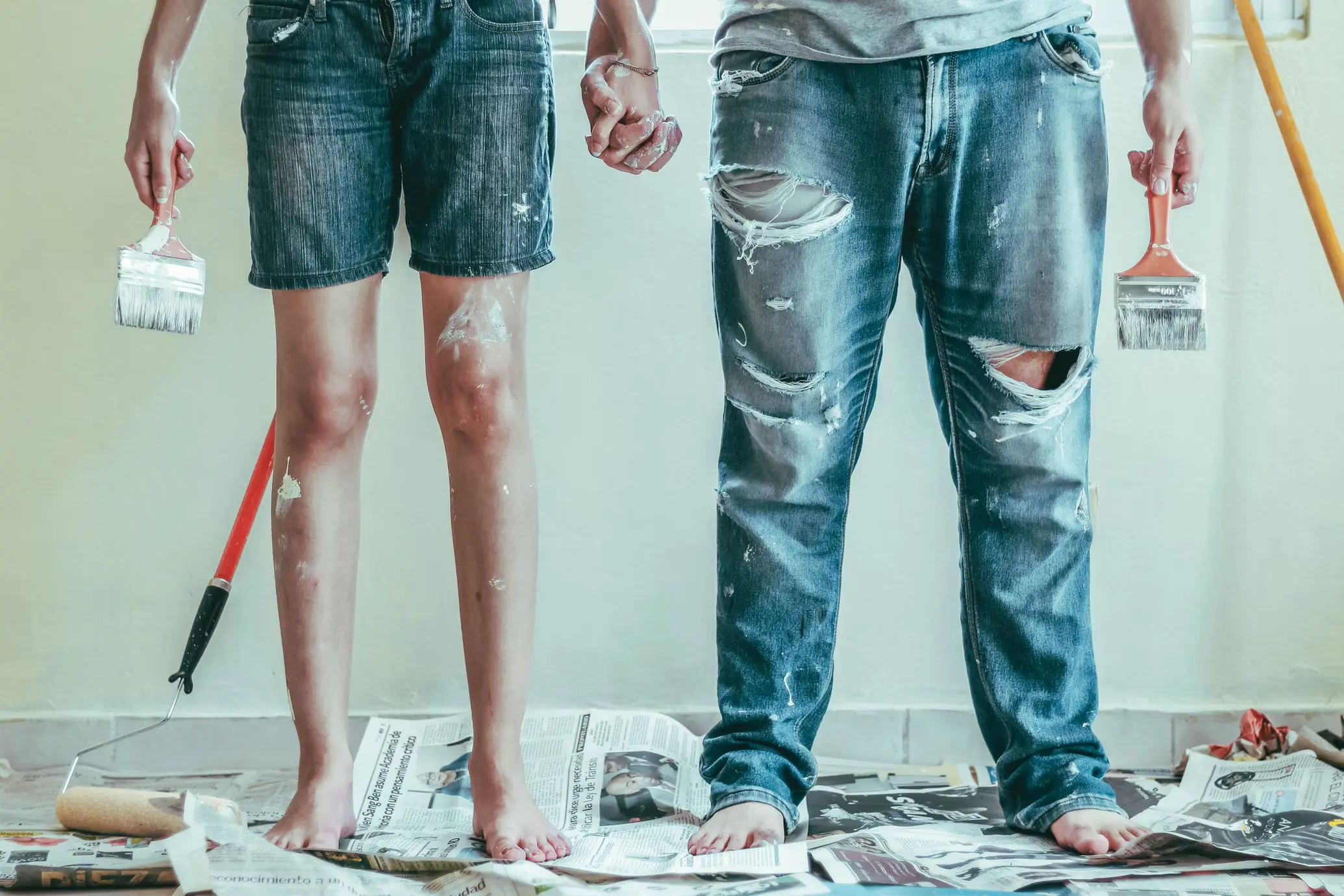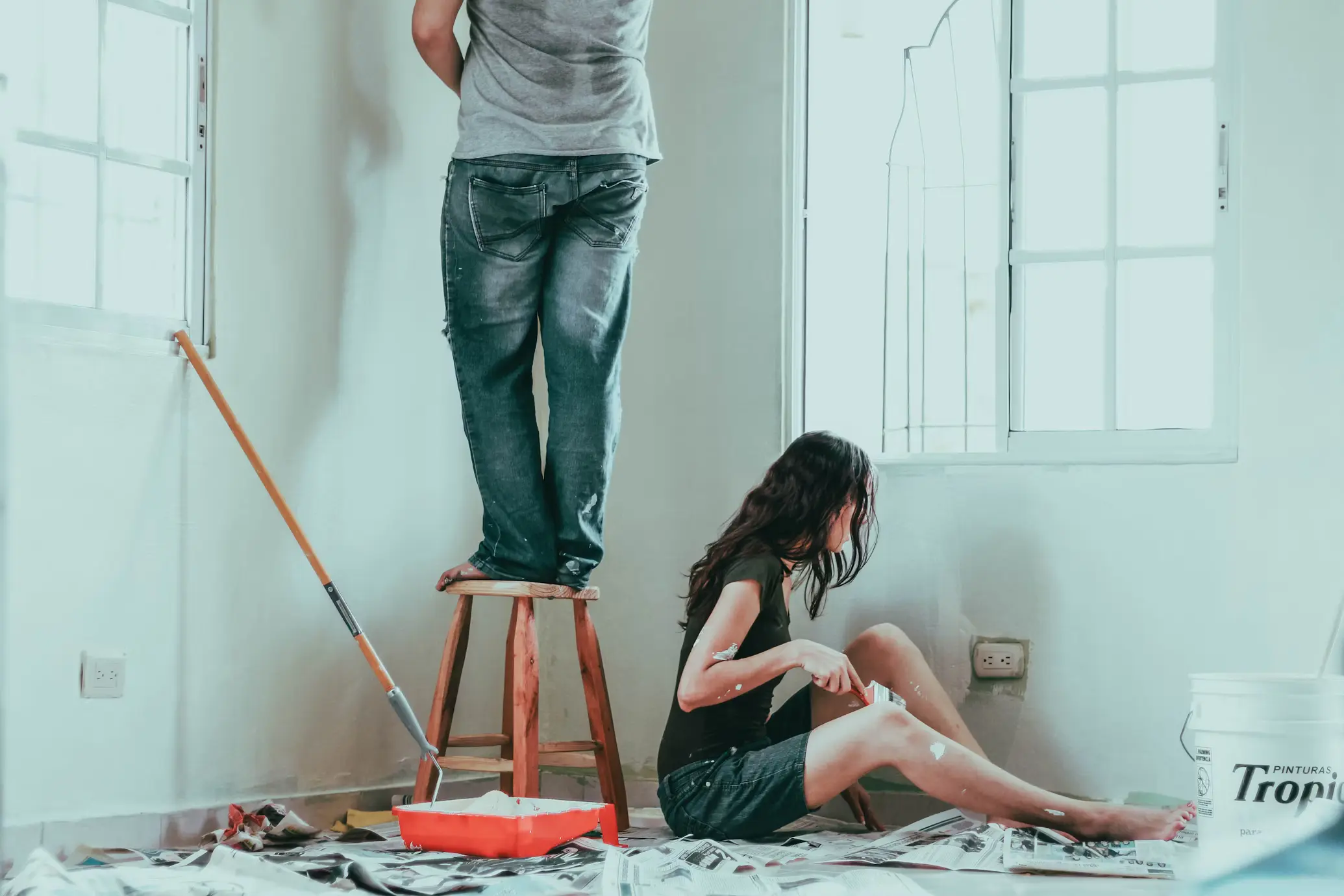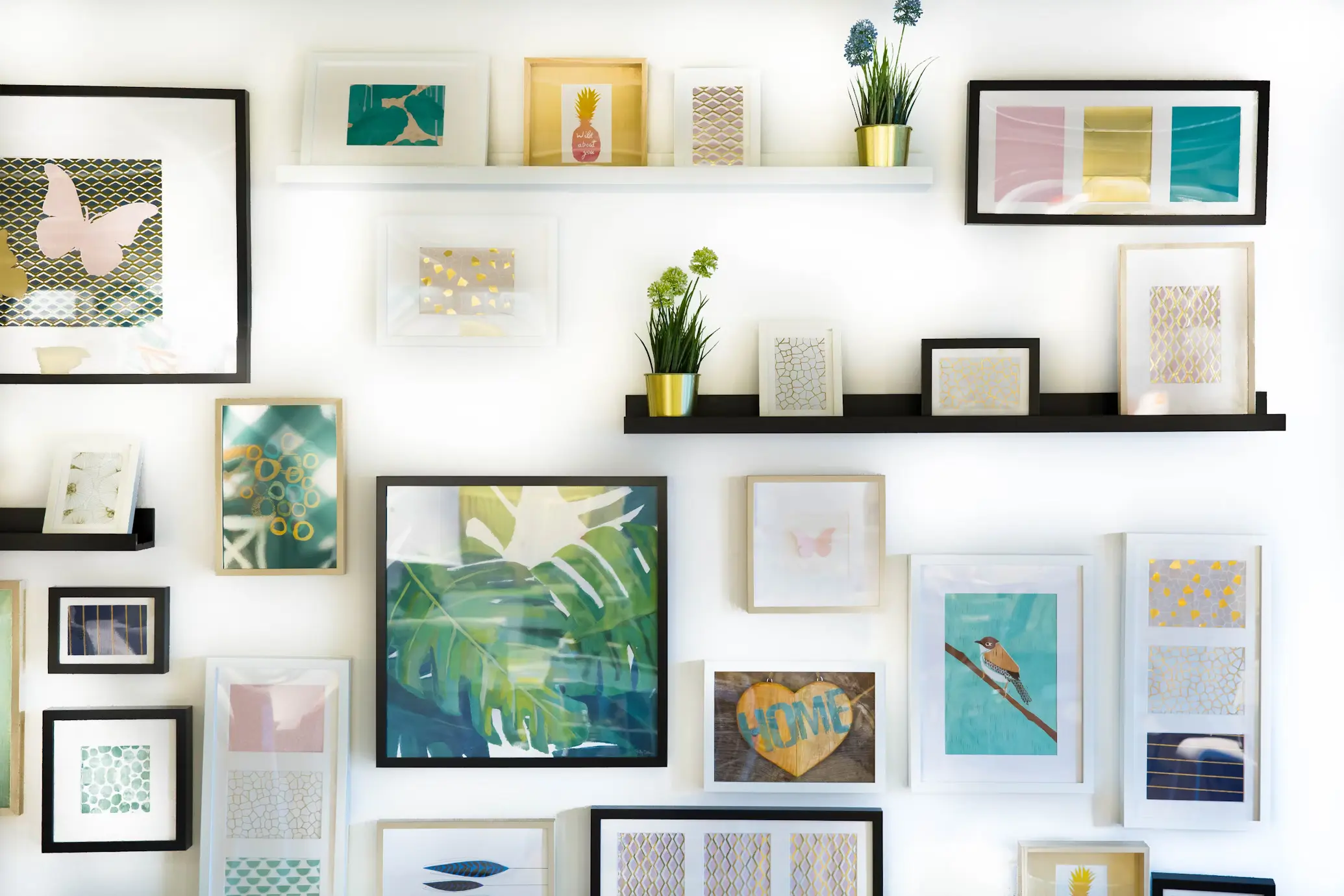Do I need Permission From My Landlord To Decorate My Rental

Do you live in a rental property and want to do some decorating? Are you unsure what decor changes tenants are allowed to make? Decorating a rental property can be a great way to make it feel more like home. However, as a tenant, you need to be mindful of the terms of your tenancy agreement and your landlord’s policies.
It’s not a surprise that, as interior designer Katherine Ormerod says in her article for House And Garden on the highs and lows of decorating a non-permanent family home, “over a fifth of Britons live in private rentals and the number of parents in their 30s and 40s who are still unable to own a family home is skyrocketing.”
Also, according to the Tenancy Deposit Scheme, redecoration is involved in 32% of all tenancy disputes. So if you want to keep a harmonious relationship with your landlord and protect your deposit, it’s worth ensuring any changes you make to decor are agreed with your landlord.
Here are some guidelines to help you navigate decorating your rented house.

What does your tenancy agreement say about decorating a rented home?
When considering decorating your rental home, it's essential to start by reviewing your tenancy agreement. This contract typically details what changes are allowed and which are not. Specifically, look for clauses related to decorating, alterations, or modifications to the property.
These sections will provide guidance on permissible actions and any restrictions you need to adhere to. Understanding these rules can help you avoid potential conflicts with your landlord and ensure that any changes you make are compliant with the terms of your rental agreement.
Reading through House And Garden, in their article about decorating a rented house, interior designer Clare Gaskin recommends: “Check the terms of your lease first and don’t just assume that you can’t push things a bit. If you think you’ll be there for a while and want to change something, put it to your landlord and make your case as to why something should change. It can add value to their property after all. They probably won’t be willing to change the flooring or anything major like that, but if it is particularly bad, you can always offer to cover a third or half of the cost with them.”
Do I need to get permission from my landlord to decorate my rental property?
In a word “Yes”, it's best practise to check with your landlord before making any changes.
If your tenancy agreement is unclear or for more significant alterations, e.g. painting walls, changing flooring, installing shelves, you would need to obtain written permission from your landlord. There are many sample letter templates online which you can use by just inserting your information and downloading to send to your landlord.
Failure to do so can result in loss of your tenancy deposit or even eviction. However, the Deposit Protection Service states that:
“Landlords can only claim for excessive wear and tear, as it would be considered a claim for damages. This is particularly important in disputes where the tenant has lived in the property for a long time. For example, the adjudicator is unlikely to make an award for a claim for redecoration costs where the tenant has lived in the property for five or more years, as the landlord would probably have needed to redecorate anyway, regardless of anything the tenant has done.”
We recommend that you keep a record of all communications and agreements with your landlord or letting agent for future reference.
How can I decorate my rented house without making any significant changes?
Most landlords allow temporary or easily reversible changes to the decor of a rented property. This can include hanging pictures using adhesive hooks and strips to hang pictures, mirrors, and other items to avoid putting holes in the walls.

The most popular are Command Strips that can be used on a variety of surfaces and leave no damage. Amazon is a great place to find lots of different types of Command Strips. The Command website also has some great step-by-step guides and videos about their different products, how to apply them and how to remove them.
Here's a ‘How To’ guide created by Command Strips showing how easy they are to use and remove:
Instead of painting or wallpapering walls, you could use peel-and-stick wallpaper and wall stickers that can be easily removed without damage. Websites like Etsy are a great place to find decorative wall stickers and murals. While wall stickers are really easy to do yourself, take a look at this tutorial to show you how to apply them properly - they’re so simple that even children can do it!
Here's a video explaining how easy it is to put up wall stickers:
Have you heard of Washi Tape? An innovative Japanese masking tape that is highly decorative and can be used to add patterns to a room as a border or as a decorative frame.
Kitchens and bathrooms can be expensive and time consuming to decorate, but there are some temporary and budget ways you can give them a makeover. Tile stickers are a great way to instantly change a bathroom or kitchen, they come in a variety of different designs and can add a burst of colour to an otherwise plain kitchen or bathroom. Tile stickers are also really quick and easy to apply and remove, making them rental property friendly. There are many places online and in-store where you can buy tile stickers, but as always, Amazon has a great selection of affordable designs. Check out this video on how easy they are to apply.
Here's a video showing how easy it is to apply wall stickers to quickly change the look and feel of your rental property:
If the kitchen worktops are looking a bit tired then you can buy temporary adhesive vinyl wrap, which you apply and remove by yourself. These have become popular in recent times and you’ll find a variety of different styles including wooden and marble effects. A good place to shop for these is B&Q who have a large selection of vinyl wraps for kitchen worktops which can be viewed online and in-store. It can be a bit tricky to apply the vinyl at first, but there are lots of tutorials online that will help you get the hang of it.
Here's a video showing how to wrap a kitchen worktop in vinyl:
Using furniture, curtains, soft furnishings and decorative items can also add a personal touch to a property without making any changes. We love these ideas from Ideal Home on how to add a personal touch to your rented property.
By using colourful or patterned soft furnishings you can add character to any room in an instant. You can bring a room to life with some new curtains as a focal point of the room, along with bright cushions, throws and bedding sets. Speaking to House And Garden, designer and artist Andrew Buchanan says “Don't underestimate the power of cushions. They can instantly add flashes of colour to a space and make it feel more homely.”
A large rug can hide an unsightly carpet and bring warmth to a room, especially if you prefer carpets but have a wooden floor. There are lots of various home decor retailers you can purchase soft furnishings from, Dunelm especially have a great choice of curtains and bedding.

Some rented properties can feel dull, a good way to bring warmth and add a homely feel can be by using some nice lighting solutions. String lighting looks attractive around windows, frames and mirrors, or along shelves and fireplaces. Using statement standing lamps or bold lampshades adds a focal point to a room. Speaking to House & Garden, interior designer Natalie Tillison says “Rentals always seem to have poor lighting, but can be completely transformed with just a floor lamp and a table lamp.”
You would also be surprised how placing some plants in your rented house can also add character and brighten up a room. A tall plant can bring to life a bare corner and small plants can add a decorative touch.

The great thing about using soft furnishings and decorative items to add a personal touch to your rented home is that they don’t require any fitting or removal, and you can simply take them with you whenever you move too.
What are the laws about returning my rented property to its original condition?
If you do make changes (with or without permission), you are generally required to return the property to its original condition when you move out. This means filling in nail holes, repainting walls back to their original colour, and removing any installed fixtures unless agreed otherwise. If you need to fill in holes in a wall, places like Toolstation are a great place to get everything you need - they have ready made filler for a variety of different surfaces. Ronseal also has this easy to follow video tutorial on how to use wall fillers.
Check out this useful video guide which explains how to use wall fillers:
Make sure you take photos of the property before making any changes to document its original state and ensure that any changes you make can be easily reversed when you move out.
However, this should not be confused with general wear and tear in a rented property. The Tenancy Deposit Scheme states:
“Fair wear and tear refers to the reasonable deterioration that occurs in a rental property over time, as a result of normal, everyday use during the period of a tenancy. It’s separate from damage caused by misuse, negligence, or intentional actions of a tenant, which the tenant should be responsible for.”
Key takeaways:
By following this guide to decorating your rental property, you can make the property feel like your home and add a personal touch without compromising your deposit.
Always communicate openly with your landlord or letting agent about any changes you wish to make. Clear, written agreements regarding decoration and alterations can prevent misunderstandings and protect your tenancy deposit.
